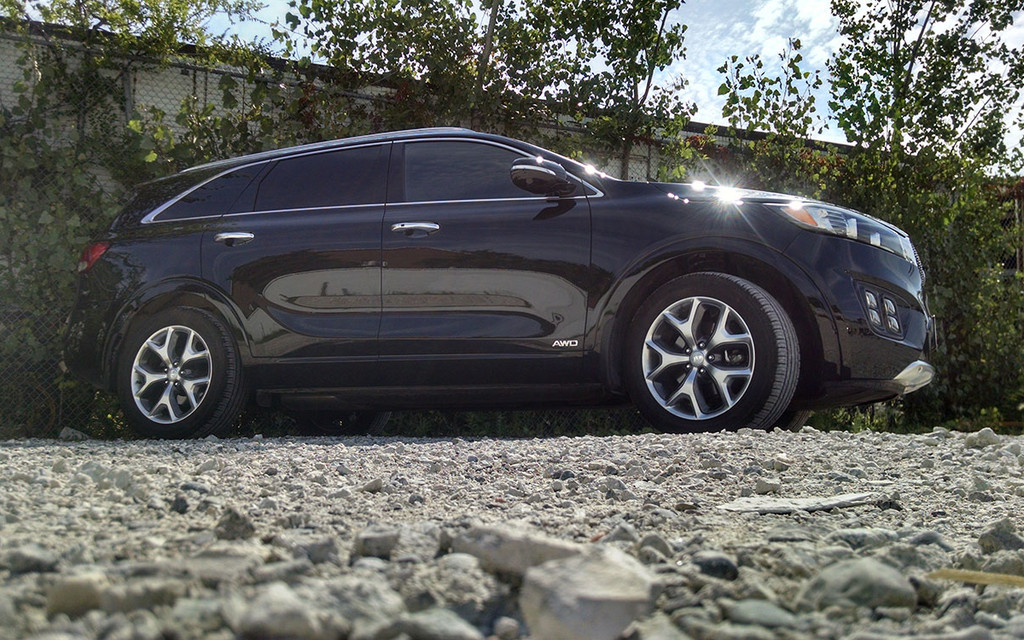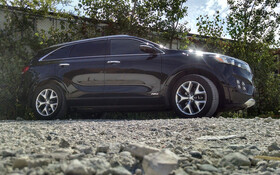First Drive: 2016 Kia Sorento
I’ve never been a big sport utility guy—at least not in terms of the modern day incarnation of the sport utility.
(I did once briefly own a Jeep Cherokee XJ, but a rust-ridden floor quickly put an end to that.)
It’s not that I don’t see the added versatility that they provide—and I’m speaking, of course, in terms of interior usability, because let’s face it: SUVs today aren’t geared towards getting anywhere except the shopping mall—compared to a sedan, I’ve just never seen myself owning one.
After spending a few weeks with the 2015 Kia Sedona earlier this summer, my mind was made up: If the time comes that I need to buy a large family vehicle, I will go the way of the so-called “soccer mom” and saddle up in a minivan.
The 2016 Kia Sorento, however, has thrown a serious wrench into those plans.
(Disclaimer: It’s merely a coincidence that I have driven these two Kias in such short succession.)
I may not be as jaded as Brad Diamond, or as endorsing of estates as Jim Kenzie, but both gentlemen make excellent points about SUVs and crossovers.
The new Sorento made me forget all of them.
It’s roomy and comfortable and practical, and, perhaps more importantly, doesn’t feel like an SUV.
Sure, it sits higher off the ground than a car, but it envelops you the way a sedan or wagon does, and does away with most of the body roll and tippy behaviour typical of sport utilities.
And, as Graeme Fletcher pointed out in a recent Test Drive featuring the Sorento, the sport option in the standard drive mode select system offers an Optima-like drive when you’re in the mood.
With the 3.3-litre V6 under the hood, the Sorento makes 290 horsepower and 252 lb.-ft. of torque while still offering reasonable fuel economy—about 9 L/100 KM on the highway and 13 L/100 KM in the city.
Fuel economy numbers in the 2.4-litre naturally-aspirated or 2.0-litre turbocharged four-cylinder offerings are slightly better, though barely enough so to make either your choice based on savings at the pump.
Inside, the Sorento makes the most of the room provided, and is available in both five- and seven-passenger configurations.
Regardless of the number of seats, the Sorento offers a shade under 1,100 litres of cargo room behind the second row and just under 2,100 litres with the rear seats folded flat—the latter proving better than the slightly larger Dodge Journey.
It’s interesting to note that the Sedona offers more cargo room behind its second row of seats, with 2,200 litres, than the Sorento does with all rear seats folded.
All Sorentos get power-adjustable driver seats, with the number of ways to move them increasing as you step up through the trim levels, culminating in a 10-way version in the EX and SX models, as well as an eight-way power adjustable passenger seat in the SX.
As expected, the top-of-the-line trim gets a ton of interior add-ons, including an eight-inch touchscreen infotainment system with voice-controlled navigation that builds on the functionality of the UVO system, one of my favourites on the market today.
The SX model also adds a power tailgate that can be opened from the fob or by standing at the rear bumper for a few seconds—a feature that makes loading the trunk with full hands very easy.
I’m still not totally sold on the idea of owning a sport utility.
The practical side of me says that for the price, a minivan is hard to beat in terms of sheer utility and usability.
But driving this Sorento has made me realize that maybe SUVs are a good compromise after all.
Now if I could only remember what Brad and Jim had to say...











